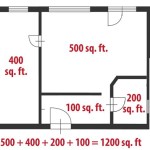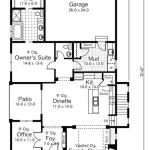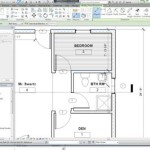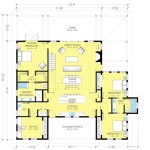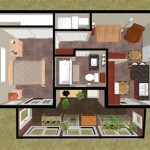How to Obtain the Floor Plan of Your House
Acquiring a floor plan for a house can be essential for various purposes, ranging from renovation projects and interior design to insurance claims and historical documentation. This document serves as a scaled diagram of a building, showcasing the relationships between rooms, spaces, and physical features at one particular level of a structure. Understanding how to find or recreate a floor plan is a valuable skill for homeowners, potential buyers, and anyone involved in real estate or construction.
The process of obtaining a house floor plan can vary depending on the age of the property, the local regulations, and the availability of historical records. In some cases, the original plans may be readily accessible through official channels. In others, meticulous research and possibly even a professional survey might be needed. This article aims to provide a comprehensive guide to the various avenues through which a floor plan can be obtained, ensuring a homeowner has the necessary tools to navigate the process effectively.
1. Contacting Local Government Agencies and Building Departments
One of the primary sources for obtaining a floor plan is the local government’s building department or planning office. These departments often retain records of building permits, construction documents, and other relevant property information. In many jurisdictions, submitting an official request to view these records is a straightforward process. However, there are several factors to consider when pursuing this avenue.
Firstly, it is vital to identify the specific department responsible for maintaining building records in the relevant locality. This information is typically available on the local government's website. Common search terms include "building permits," "planning department," or "property records." Contacting the office directly via phone or email can clarify the correct procedure for accessing records.
Secondly, be prepared to provide specific information about the property. This includes the property address, parcel number, and possibly the date of construction or any major renovations undertaken. Accurate information will expedite the search process and help the department locate the relevant documents. Knowing the approximate year of construction, especially if the house is older, is extremely helpful when searching archival records.
Thirdly, access to building records may be subject to specific regulations and fees. Some jurisdictions offer online access to a database of building permits and related documents, allowing for convenient remote searching. Others may require a physical visit to the department to review records in person. In either case, there may be associated fees for accessing, copying, or printing the documents. Check the department's website or inquire directly about applicable fees and payment methods.
Finally, it is important to note that not all properties will have readily available floor plans on file. Older homes, or those built before the enforcement of strict building codes, may not have documented plans. In such cases, alternative methods for obtaining or creating a floor plan, as described later in this article, will be necessary.
2. Reviewing Mortgage Documents and Homeowner’s Insurance Policies
While not always a guaranteed source, mortgage documents and homeowner’s insurance policies can sometimes contain or reference floor plans. Banks and insurance companies may require or request floor plans during the mortgage approval or insurance underwriting process. These documents, if available, can provide a valuable starting point for obtaining a floor plan.
Mortgage documents, particularly those associated with the initial purchase of the property, may include an appraisal that incorporates a basic floor plan. The level of detail in these plans can vary, ranging from a simple outline of the building's footprint and room layouts to more detailed representations with dimensions and structural elements. Reviewing the original mortgage documents, if accessible, is a worthwhile step in the search for a floor plan.
Homeowner's insurance policies can also contain information relevant to the building's layout and construction. In some instances, an insurance company might have requested a floor plan as part of the risk assessment process. This is more likely to occur for high-value properties or those with unique architectural features. Contacting the insurance provider and requesting a copy of any floor plans on file is a reasonable approach.
However, it's important to manage expectations when relying on mortgage documents and insurance policies. The primary purpose of these documents is not to provide a comprehensive floor plan, but rather to assess the value and risks associated with the property. As a result, the floor plans included in these documents may be simplified, incomplete, or outdated. Nevertheless, they can serve as a useful reference point and potentially save time and effort in the overall search process.
3. Hiring a Professional Surveyor or Architect
When existing floor plans cannot be found or are inadequate for the intended purpose, engaging a professional surveyor or architect becomes a viable option. These professionals possess the expertise and equipment necessary to accurately measure and document the dimensions and layout of a building, creating a detailed and precise floor plan.
A land surveyor can create a topographical survey of the property which provides the property's boundaries and the building’s footprint, as well as any other buildings on the property. This is particularly useful if you also need the boundaries of your property and to know the exact location of the structure on the land. This usually provides information that is more detailed than what is found at the local government building records.
An architect, equipped with specialized tools and software, can conduct a thorough on-site assessment of the property. This involves measuring the dimensions of each room, noting the location of doors, windows, and other structural elements, and identifying any unique architectural features. The architect can then use this data to create a digital floor plan using computer-aided design (CAD) software.
The cost of hiring a professional surveyor or architect can vary depending on the size and complexity of the building, the level of detail required in the floor plan, and the professional's hourly rate. Obtaining quotes from multiple professionals and clearly outlining the project requirements is advisable to ensure a fair price and satisfactory outcome. While this option may involve a significant investment, the resulting floor plan will be accurate, comprehensive, and tailored to specific needs.
Furthermore, engaging a professional offers the opportunity to incorporate specific requirements into the floor plan. For example, a homeowner planning a renovation project might request the inclusion of electrical wiring, plumbing lines, or HVAC systems in the floor plan. This level of detail can be invaluable during the design and construction phases of the project.
4. Utilizing Online Resources and DIY Methods
In situations where budget constraints or accessibility issues limit the ability to engage a professional, online resources and do-it-yourself (DIY) methods can provide alternative solutions for creating a floor plan. While these methods may not offer the same level of accuracy and detail as a professional survey, they can be a cost-effective and convenient way to generate a basic floor plan for various purposes.
Several online tools and mobile applications are designed to assist in the creation of floor plans. These tools typically allow users to input room dimensions, add walls, doors, and windows, and generate a basic floor plan diagram. Some applications utilize augmented reality (AR) technology to streamline the measurement process, allowing users to simply point their mobile device at a wall and capture its dimensions automatically. However, the accuracy of these AR-based measurements can vary depending on lighting conditions and the device's capabilities, so it is important to verify the results with a measuring tape.
For a more traditional DIY approach, a measuring tape, graph paper, and pencil are the essential tools. Start by measuring the perimeter of each room, carefully noting the dimensions of walls, doors, and windows. Then, transfer these measurements onto the graph paper, using a consistent scale to ensure accurate representation of the room's proportions. Connecting the dots to form the walls and adding symbols or annotations to indicate doors, windows, and other features will create a basic floor plan diagram.
Regardless of the chosen method, it is crucial to take accurate measurements and maintain consistency throughout the process. Double-checking measurements and ensuring that all rooms are drawn to scale will significantly improve the accuracy and usefulness of the resulting floor plan. While these DIY methods may not be suitable for complex or critical applications, they can provide a valuable starting point for simple renovation projects, furniture placement planning, or basic property documentation.
Furthermore, remember to document any discrepancies or uncertainties encountered during the measurement process. Adding notes and annotations to the floor plan will help to identify areas that may require further investigation or clarification. The ultimate goal is to create a floor plan that is as accurate and informative as possible, given the available resources and constraints.
The availability of a house floor plan is a valuable asset for homeowners. By exploring all available avenues, from contacting local government agencies to utilizing online resources and engaging professional services, obtaining or creating a floor plan becomes an achievable goal. The resulting document can serve as a valuable tool for a wide range of purposes, enhancing the enjoyment and management of the property.

House Plans How To Design Your Home Plan

House Plans How To Design Your Home Plan

How Do I Get A Floor Plan For My Property

House Plans How To Design Your Home Plan

9 Ways To Find Floor Plans Of An Existing House Blueprints Archid

How To Find The Original Floor Plans For Your House

Drawing Up Floor Plans Dreaming About Changes Young House Love

Pin On House Layout

Where You Can Buy House Plans Live Home 3d

Tips For Selecting The Right Floor Plan Your Home Sater Design Collection
Related Posts

